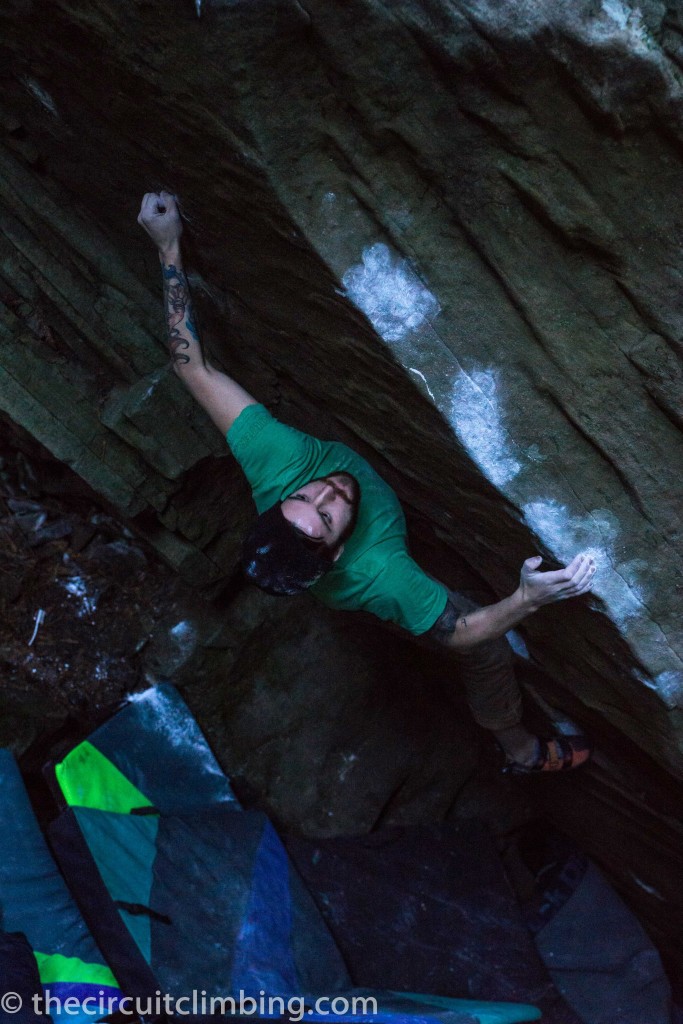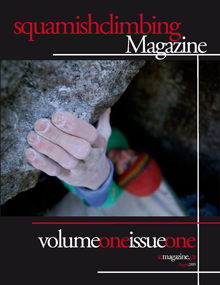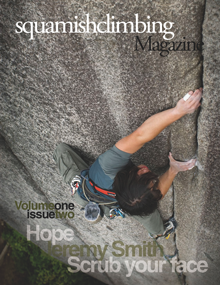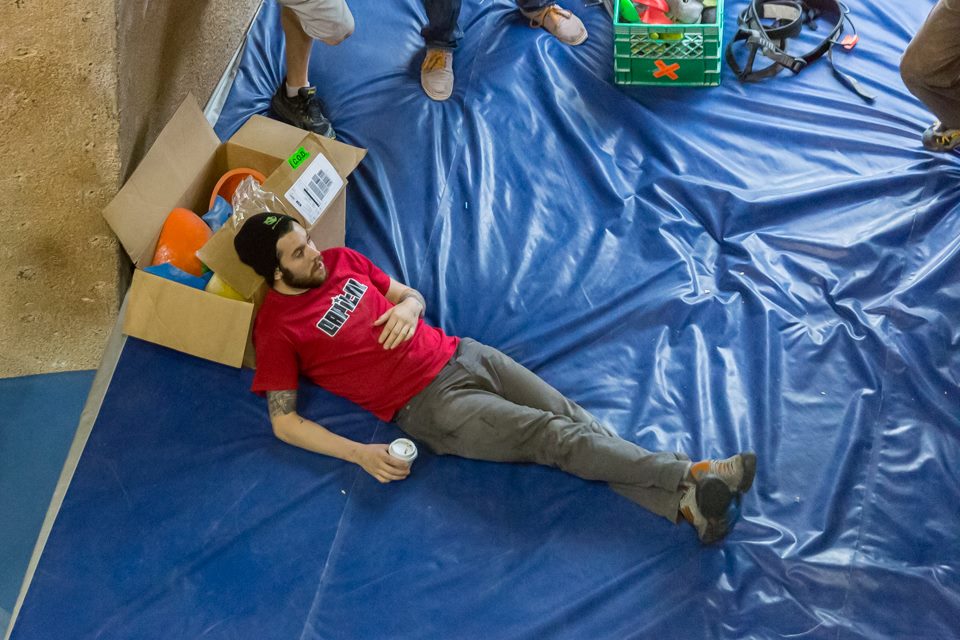
Kaleb in his usual stance during Western Regionals at Climb Base 5. Photo by Shane Murdoch
Although Kaleb Thomas has been a part of the BC climbing scene for a number of years, he is just now establishing his name in the Lower Mainland as a route-setter with style. Climbing for the past 10 years, Kaleb has always been drawn to route-setting. He began working at Wallnuts Climbing Centre In St. John’s Newfoundland and has now found a home at Climb Base 5, in Coquitlam, BC. Squamish Climbing Magazine had the chance to talk to Kaleb and here is what he had to say.
Hi Kaleb. How is it going?
Hey Tim, I’m good as always!
To give our readers a little background, when did you start climbing and why did you move to the coast?
I started climbing about 10 years ago at Wallnuts Climbing Centre In St. John’s Newfoundland. I moved to BC in 2012 to get myself closer to good climbing, more competitions and to take an awesome job opportunity at Crag X in Victoria.
How did you first get into route setting?
I started route-setting almost as soon as I started climbing. I was a way too psyched 14 year old with a taste for Red Bull. I spent a lot of time at Wallnuts; climbing, belaying, harassing people and route setting. I would say I was pretty into it right from the start.
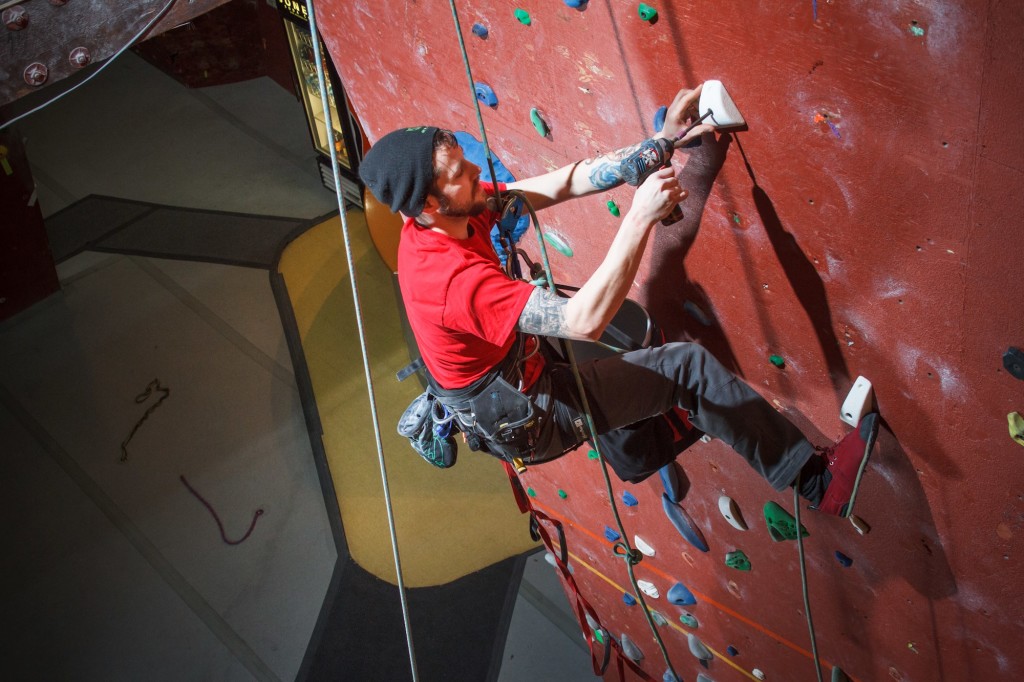
Setting at Crag X. Photo by Esrah Boulton
What was the climbing scene like in NFLD back then?
NL had a small but vibrant scene, and it’s still pretty similar. When I was coming up, we looked up to a few
of the more committed members, Leo Van Ulden (Who owns the gym), Dave Stack, Paul Chaisson, Jay Wall, and Geoff Holmes to name a few. We had a lot of young people, like myself, Matthew Scott, and David Bruneau who looked up to these guys a lot, and spent as much time as we could either in the gym or on the rock. I was a bit of a punk at the time, so maybe I didn’t make the most friends 😉 but from my perspective it was an awesome scene to be a part of. I often say that without climbing, and the scene in NL I probably would have ended up with either a desk job or a drug problem. Since we are talking, I gotta shout out to all the homies back in NL still looking for new rock, still climbing whenever its dry and still going after it – those guys know who they are and they are still pushing the scene hard out there!
What do you like best about route setting?
Go buy a bottle of wine for this cheese – but the best part is definitely seeing people having a good time on something you created. When you miss the mark on a route people don’t get excited about it, it keeps you wanting to work hard knowing that when you do nail it, you’re going to make people really happy – at least for that few minutes of their day.
How does it feel to call Climb Base 5 home?
It’s really awesome right now – a lot of energy, a lot of people excited to grow the business and make it a facility that we can be truly proud of. This gym has an incredible vibe, and a lot of really psyched climbers so it’s great to be here building routes for them! Dan (the owner) and Colby (the manager) have been open to all of the things I wanted to change, which is great because I like to have fun within the setting program. They were on board with the guest setter program, and the process of switching to no tape and they got me 500 new holds in the first week there so that wasn’t bad either.
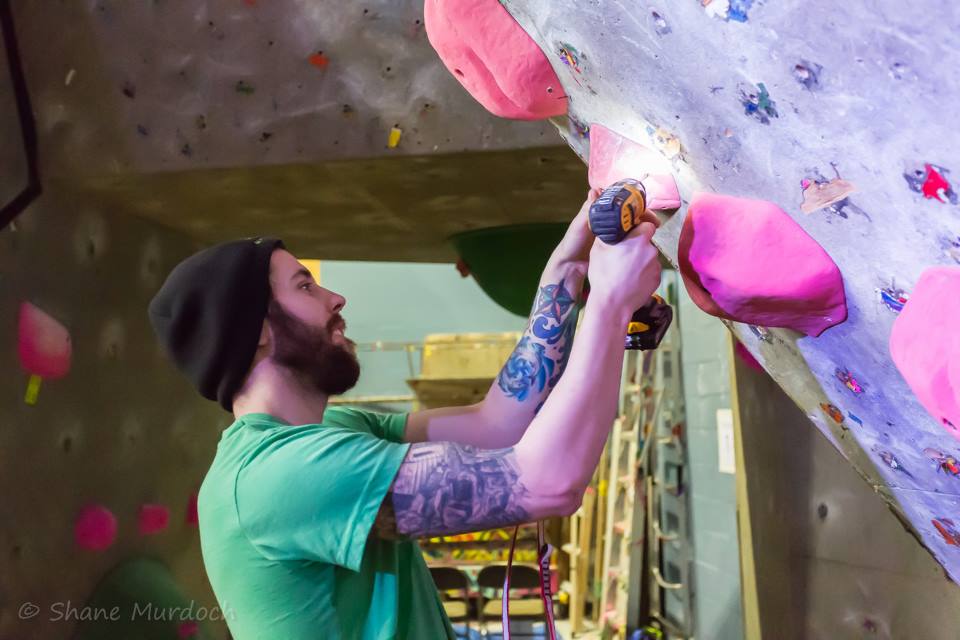
Kaleb Thomas Setting at the Edge for BC Provincials. Photo by Shane Murdoch
Competitions route-setting has its own set of rules. Can you tell us a bit about the rules that dictate setting at SCBC events?
At the SCBC we follow the IFSC rules basically to a tee, except for a small difference in the format of our local comps. I personally find this format pretty good for the route-setters, it doesn’t limit us in many ways, and creates a very fair field of play for the competitors. My only qualm is the “all point start”… It basically means the climber has to be established on 4 holds before they can “start” the problem. This takes away our ability to set jump starts, or running starts or anything like that. While this is sometimes a bad thing for us – for the most part I am not sad to see jump/running starts go. If these starts aren’t set perfectly then they end up being very size dependent, or in some cases just don’t at all resemble real rock climbing!
How does that differ from IFSC rules?
As I mentioned, the big difference is our format for local qualifiers. The IFSC uses a 5min on / 5 min off format over 5 boulders, which is an excellent format but I believe the SCBC avoided this because it places a lot of pressure on the Youth, as well as limits access to the competitions for our Experience and Recreational climbers. Instead, the SCBC uses a “modified scramble” which is essentially a hybrid between the Tour De Bloc and the IFSC qualifier. Competitors are given 6 problems, and have 2.5 hours to complete as many of these problems as they can – they are allowed to watch all the other competitors, have as much time on each problem as they want, and can try the problems in any order they choose. I like this format because it maintains the “vibe” that scramble format is so good at creating, but gives the climbers a slightly more realistic feel.
Can you tell us a bit about the challenge of route setting for comps and what you are trying to accomplish?
With regards to what we are trying to accomplish – trying not to speak for Simon Parton but he chiefs almost all the SCBC comps – I think first of all we want a safe comp, injuries aren’t good for the sport. We want to see nice spreads, where all the problems or routes get sent, with no ties and an even breakdown through the rest of the list. Lastly, we want to build climbs that are fun, and challenging for the competitors with a varying number of styles or moves so that the most well rounded climber on that day wins!
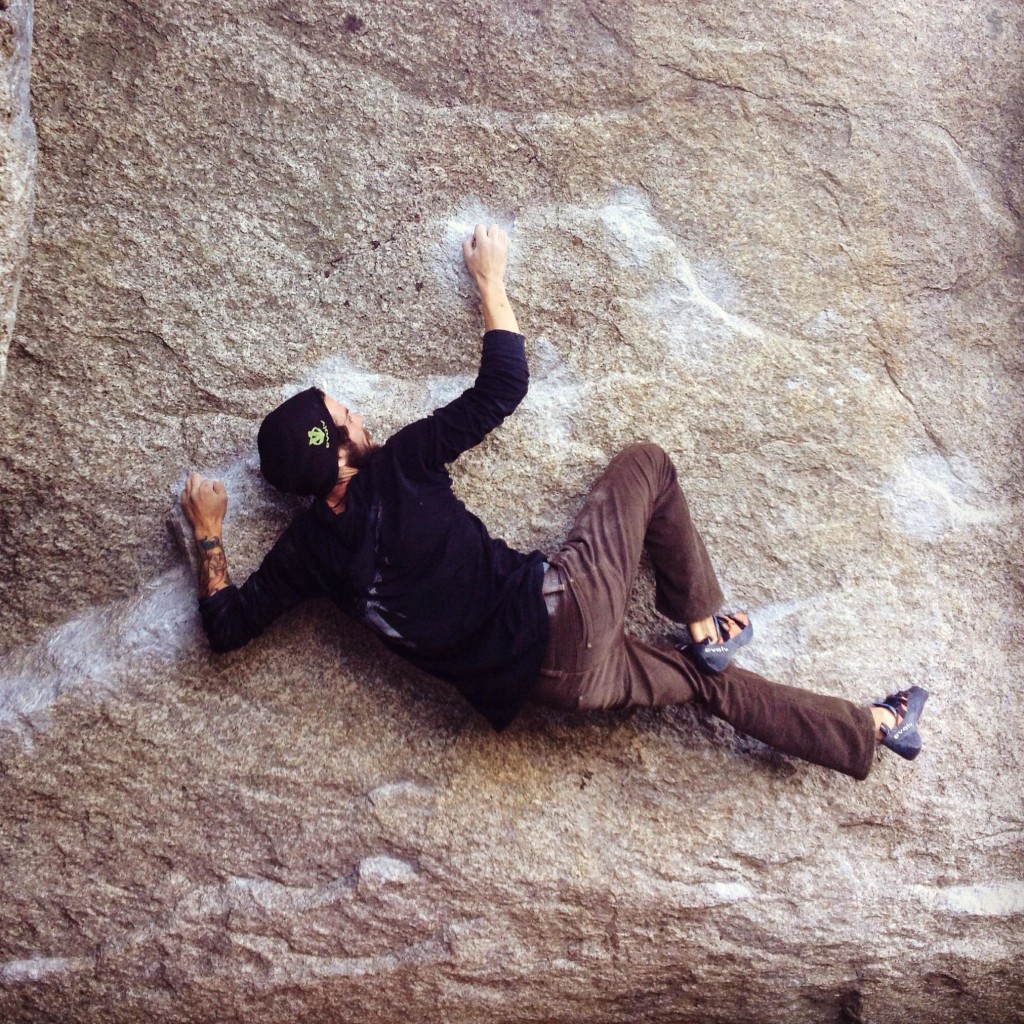
Sending Primal Urge. Photo via Auto timer Function on Kaleb’s Iphone
How taxing is route setting on the body? Does it serve as training for climbing or does it wear you out like any other job?
It can be for sure. I set a comp with Dustin in Toronto when I was 19 and he spent a half hour yelling at me about the importance of using an impactor and how I wouldn’t route set when I was thirty if I had elbow tendinitis… so that stuck! It can wear you down, but really it’s no worse than any labour job! We move heavy stuff and spend 5 hours in a harness – tons of people have it worse, and like anything, you can be smart or you can be dumb about it.
I always say that route setting full time will never make you a stronger climber but it will make you a better climber. You learn a lot about how to move properly when you spend six hours a day talking about movement. I find I don’t ever get weaker when I’m setting a lot – it will always at least maintain my current fitness.

Sending Worm World Cave. Photo by Alia Bickson
With all that time inside, how do you stay psyched for outdoor projects?
All that time inside is HOW you get psyched for outdoor projects. Also, mother nature is an O.G. – badass route setter and I like her style. No route setter has mastered intriguing movement of varying styles better than nature so it’s always awesome to get out and work on my projects. It can also revitalize your setting to go out and climb in different areas, you always hit the gym a little more psyched and usually with some fresh ideas.
Any projects outside these days?
Nothing super super serious right now to be honest. Its kind of nice not to having something loom over you.
That said, I was back on a problem called Equinox on the Island recently that I have been trying for a few years now.
Its a really nice line and I came very close to sending it last month. Outside of that, I am pretty psyched on the Summoning Sit in Squamish, although my last session on this problem really didn’t go well at all haha!
Being a part of the lower mainland climbing scene for a few years, where do you think it is going?
Great Question – I think all the gyms are looking to expand right now, and the numbers for the competitions are constantly growing. We have a few new gyms popping up this year and I think there is a lot more happening in the future! I think we all know that the industry as a whole is being driven by the climbing gyms right now, as they can access a way wider market then outdoor climbing ever could. Having just spent the last 8 months living in a tent/van in Squamish, I think it is going to be very important for the gyms to be proactive about the education of outdoor climbing. I see a lot of litter, missed trails, obnoxious yelling and a host of safety concerns happening in the forest and even though the gyms don’t have a “legal” obligation to take care of this it is a disservice to the sport for the gyms to ignore this problem. I think everyone involved can feel the energy and excitement within the industry right now, I just hope we don’t get greedy, and forget why we all got into this industry in the first place!
Thanks Kaleb. Great answers and good insight. Again, congratulations on the job!
Kaleb is on the Evolv national team and is a rep for the hold companies Kilter, Capital, and Enix
